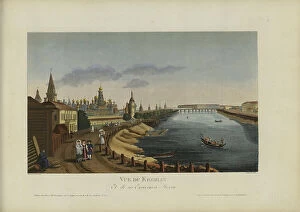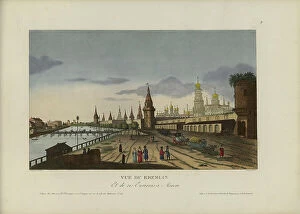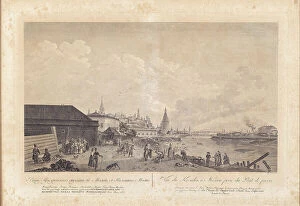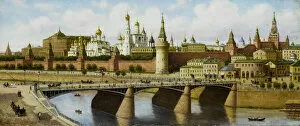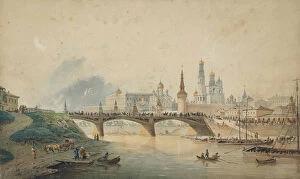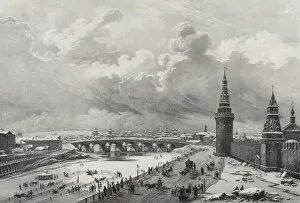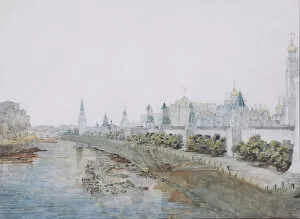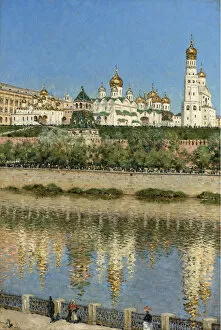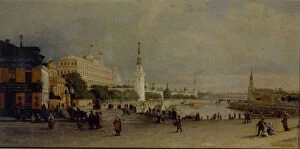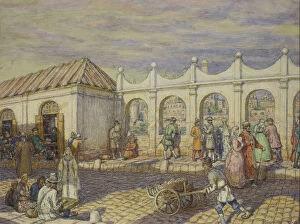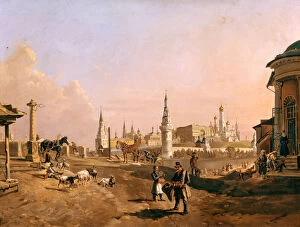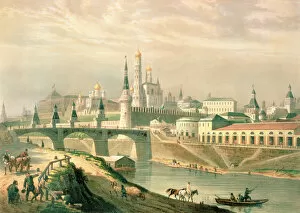Kamenny Bridge Collection
The Kamenny Bridge, also known as the Greater Stone Bridge, holds a significant place in Moscow's history and art
For sale as Licensed Images
Choose your image, Select your licence and Download the media
The Kamenny Bridge, also known as the Greater Stone Bridge, holds a significant place in Moscow's history and art. This iconic bridge has witnessed numerous events and been captured by talented artists throughout the years. One of the earliest depictions is from 1825, showcasing the majestic Moscow Kremlin alongside the Kamenny Bridge. The artist beautifully captures the grandeur of both structures, highlighting their importance in Russian architecture. In 1830, a cornerstone laying ceremony took place for another bridge called Moskvoretsky. Created by Hampeln, this event marked an important milestone in Moscow's development and symbolized progress and connectivity. Over time, more artists were inspired to depict this magnificent sight. In 1840s lithograph artwork by Vereshchagin Vasili Vasilyevich showcases an enchanting view of the Kremlin from afar. The intricate details bring out its architectural splendor against a picturesque backdrop. Another masterpiece created by Pyotr Petrovich Vereshchagin portrays a breathtaking view of the Kremlin from atop Moskvoretsky Bridge in 1851. The artist skillfully captures not only its physical beauty but also evokes emotions through his brushstrokes. Johann Nepomuk Rauch's painting from 1837 offers us a glimpse into Zamoskvorechye with Bolshoy Kamenny Bridge prominently featured alongside the Kremlin. It transports us back to that era when horse-drawn carriages traversed this historic structure daily. Appolinari Mikhaylovich Vasnetsov takes us even further back in time with his portrayal of Peter I era on Stone Bridge during 1901. This artwork allows us to visualize how it looked centuries ago while reminding us of its enduring presence today. Throughout these various artistic interpretations spanning decades, one thing remains constant –the significance as an integral part of Moscow's landscape and heritage. Its timeless beauty continues to captivate both locals and visitors alike, serving as a symbol of connection and history.

